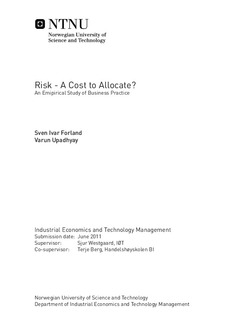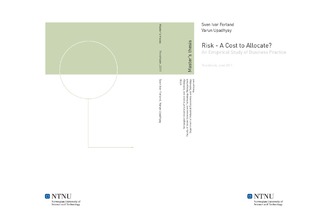| dc.description.abstract | The combination of risk management and cost allocation in order to allocate risk in a sensible manner is a field with not much existing theory. The ABC (Activity Based Costing) model seems as an appropriate cost allocation method, with a structure of using activities as a connecting link. ERM (Enterprise Risk Management) is selected as foundation for the risk management theory because it provides a general framework and a holistic approach. Furthermore, we choose to use four main risk categories. Some hypothetical ABRM (Activity Based Risk Management) alternatives based on these can be used to allocate risk. These alternatives include approaches where risk is allocated to products either from the bottom and up (bottom-up) or from the top and down (top-down). The top-down approach is most suitable when the total risk is known, while the bottom-up is most suitable when a risk category should be divided into sub-categories. A combination of the two approaches may also be of purpose. A qualitative research is conducted among Norwegian banks and power companies in order to map current risk practice. This empirical results show that banks are more sophisticated regarding both cost allocation and risk management, but neither of banks and power companies use ABC extensively, in fact the product calculations are independent of the ABC allocations. Banks have a customer focus instead of emphasizing products.If risk can be divided into overhead and direct as for costs, this fact along with the empirical findings gives a good foundation for discussing the hypothetical alternatives. Another alternative is added to better handle complex risk categories, like e.g. concentration risk. It also becomes apparent that the manufacturing industry, which we believe uses ABC for calculating product profitability, can apply all the discussed alternatives in this thesis, whereas banks and power companies can only use some of them. Regarding the question of whether or not the ABRM alternatives would be of purpose or not, this is not easy to answer before having applied it in the real world and judged its results (even after having conducted a research of banks and power companies). However, attention-directing information can be gained, and the present paper is only meant as an introductory discussion to the topic, and will hopefully provide some innovative input to the world of risk management. | nb_NO |

